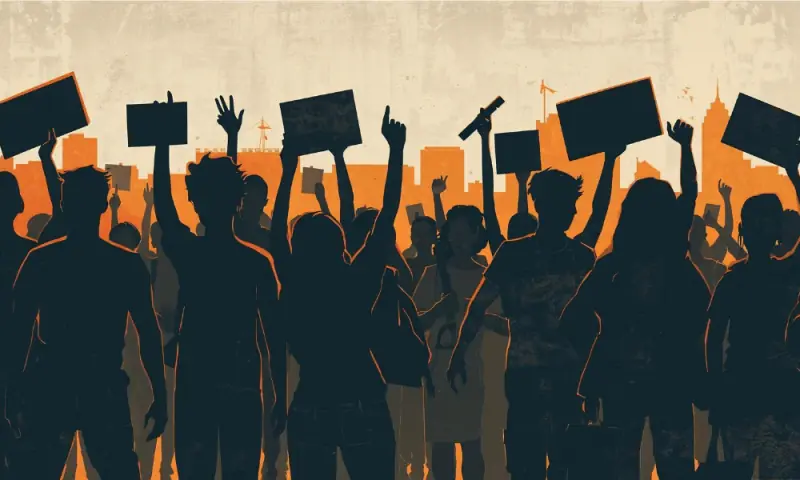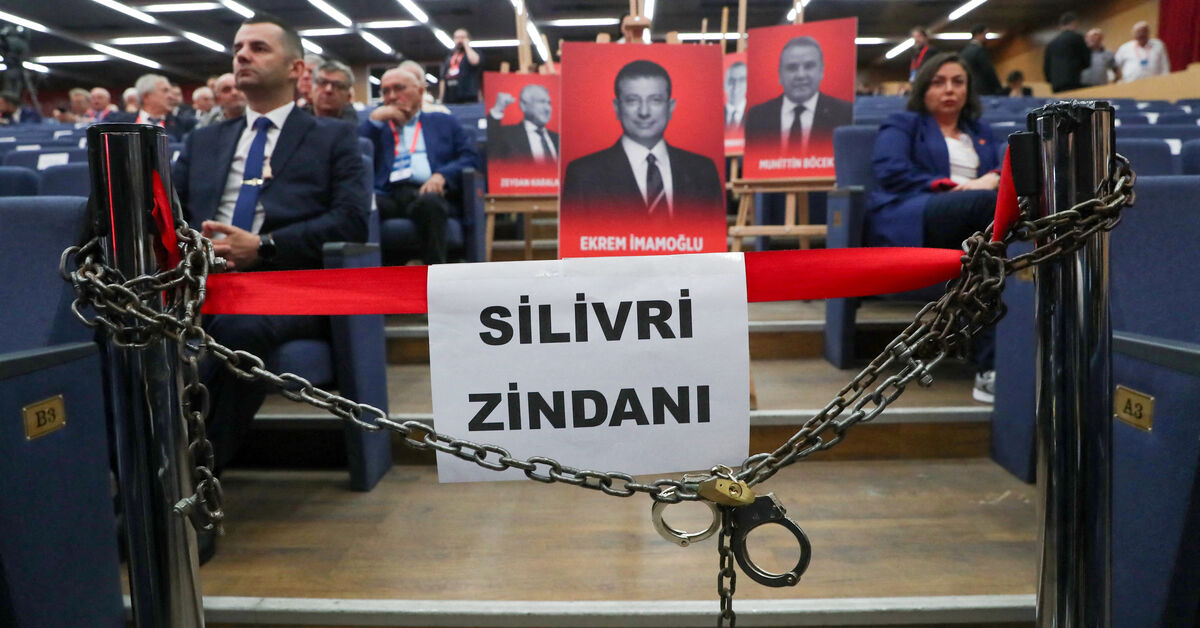Revolutions interrupted: Why digital politics of the youth is fuelling outrage, not transformation
By Aasim Sajjad Akhtar
Copyright dawn

In 2011, the much feted Arab Spring was triggered by the self-immolation of a well-educated street vendor in Tunisia, spreading to Egypt, Bahrain and many other countries. Millions of people came out onto the streets in defiance of dictators and monarchs who had ruled with an iron fist for decades.
The people had their victory, deposing hated figures like Zine El Abidine Ben Ali and Hosni Mubarak. But ultimately, the Arab Spring left a bitter taste. Authoritarian regimes and an even more exploitative capitalist order were restored in almost all of the Middle East and North Africa. Countries like Syria and Libya were ravaged by imperialist-sponsored proxy wars. Almost 15 years on, the status quo has not only been restored but appears even more entrenched.
The spontaneous mass protests which shook Nepal in early September generated a great deal of commentary in Pakistan, with some making comparisons to the Arab Spring. By joining the dots and linking the Nepali case with Sri Lanka’s mass uprisings of 2022 and the student-led movement which deposed Sheikh Hasina in Bangladesh in 2024, some suggested that South Asia is the new Middle East.
A new normal has indeed emerged in how young, alienated masses articulate their politics. The question, however, is what lies at the end of this new modality of political assertion.
To answer that, it helps to trace the commonalities and differences among uprisings across South Asia in recent years, and to situate them alongside similar movements in other parts of the world, from the Middle East to beyond. Whether Pakistan and its neighbours reinforce these global trends or chart their own path remains to be seen. What is certain, though, is that the politics of the (youth) bulge is here to stay.
It’s the economy, stupid
As in much of the Arab world, economic hardship lies at the heart of recent popular upsurges across our region. In Nepal, young people poured onto the streets after the government banned social media platforms — tools they rely on not only to vent anger against the prevailing order but also as a means of securing highly precarious gig work. Successive left-leaning governments have failed to create adequate livelihood opportunities, with un- and underemployment rates estimated to be over 20 per cent.. Little wonder, then, that vast numbers of Nepalis seek work abroad, with remittances now accounting for an astonishing 33pc of the country’s GDP.
The situation across the region is similar; Afghanistan, Pakistan, India and Bangladesh have even younger populations with foreign migrant workers numbering in the tens of millions. A significant number give themselves over to human smugglers and face dire consequences as a result, including death. At the root of this crisis is the absence of any durable programme of industrialisation and/ or job creation capable of absorbing a rapidly expanding labour force that is steadily being displaced from the agrarian sector. Those who cannot migrate abroad are overwhelmingly pushed into the informal economy, where they face super-exploitation and a perpetual uncertainty about their futures. As the Nepal case demonstrates, even relatively well-educated youth rely on temporary, low-wage gig work — a telling marker of both their aspirations and their precarity.
Marx prophesised that the economic strangulation of wage labour by capital
would create both the material conditions and alienation to trigger
revolutionary upheaval if working masses were armed with an ideological
programme. South Asian youth do not even have access to regular waged work,
and rather than any coherent ideological unity and attendant political
organisations, their political consciousness and action is mediated by digital
technologies.
The digital lifeworld
One need not look beyond Pakistani shores to understand the profound impact of digitalisation on politics. Whether the focus is on mainstream political parties such as the Pakistan Tehreek-i-Insaf (PTI), religio-political organisations like the Tehreek-i-Labbaik Pakistan (TLP), feminist assertion through the Aurat March, or popular movements in the ethnic peripheries like the Baloch Yekjehti Committee (BYC) and the banned Pashtun Tahaffuz Movement (PTM), the youth are largely inspired by — and mobilise through — digital platforms.
In parallel, the state delimits the ideological terrain of the digital lifeworld, using both its own power and colluding with Big Tech platforms to delegitimise and even criminalise the demands of popular movements; of the four examples cited above, only the TLP has been spared such attacks in recent times.
As more and more young people become active on social media, online content increasingly takes on political overtones, including satire. The vast majority of young people who vent against the system online are generally unaware that their data is being used by Big Tech to facilitate surveillance by the state or that the business model of what critical scholars call ‘platform capitalism’ is based on the selling of users’ data to advertisers.
Understood thus, youth perceive these digital platforms to be the only space to express their democratic aspirations. Mainstream political parties are captured by the establishment and propertied classes while the mainstream media operates within official limits. This is why so many popular movements gestate in digital spaces.
Yet their limits are clear. The Arab Spring’s initially celebrated horizontalism and leader-less characteristics ultimately gave way to fragmentation and the restoration of class and state power. In Sri Lanka, Bangladesh and now in Nepal, it is the established institutions of state like the army that have ultimately stepped into breach.
In Nepal’s case, pro-royalists seeking to restore the monarchy that was deposed in 2005 have made a comeback. As such, the historic gains of the communist left — which came to power through elections after successfully leading armed struggle against the monarchy — have largely been squandered. Neither could the left build a viable political organisation at the grassroots nor could it operationalise a transformative economic programme through state power. The result is a disenfranchised mass of young people who are left to deploy digital mobilisation strategies to generate spontaneous outbursts of popular assertion.
In Pakistan’s case, the PTI rose to prominence largely by mobilising millions of young people online. During the infamous period when the party leadership and the military establishment were on the ‘same page’, this online support base even functioned as the state’s frontline against so-called ‘fifth generation warriors’. But when Imran Khan’s government was quite literally booted out of power in April 2022, online sentiment underwent an about-turn. More than three years on, however, it is clear that for all of PTI’s formidable digital reach, its on-ground organisation remains too shallow to withstand sustained repression by the coercive state apparatus.
Beware coloured ‘revolutions’
The motif of ‘coloured revolutions’ is most closely associated with the collapse of actually existing socialism in Eastern Europe. From Ukraine to the former Yugoslavia, a wave of upheavals unfolded from the late 1980s onwards, ushering in a new era of liberal democracy and so-called ‘free market’ economics. In practice, the coloured ‘revolutions’ brought pro-western despots to power, who then presided over firesale privatisation of public assets and the establishment of a new repressive oligarchic regime.
In retrospect, the Arab Spring was similarly co-opted by US imperialism and its various lackeys. The Western media even branded the Tunisian uprising the ‘Jasmine Revolution’ — a label fiercely rejected by many within the country who recognised how external agendas were being imposed upon their struggle.
One does not have to believe in clumsy conspiracy theories to recognise that the 2024 student-led uprising in Bangladesh has had significant implications for the balance of forces both within the country and vis-à-vis its relations with neighbours. The emergence of the dubious figure of Muhammad Younus, along with the reinvigoration of the army top brass and religious right make clear that youth aspirations are being mediated by the ancien regime. Meanwhile, where the Sheikh Hasina regime counted New Delhi as its closest regional ally, the current Bangaldeshi dispensation has realigned itself to give more space to Rawalpindi-Islamabad.
In Nepal, even as the protests played out, there was suspicion about the especially violent elements who deployed arson as a clear strategy, with Ravilaxmi Chitrakar, wife of a former prime minister, still in critical care after suffering high-grade burns. Some Gen Z student leaders have since suggested that their entire movement was hijacked; when the dust settles, the army is now well-placed to single out anyone as a troublemaker who must be eliminated to enforce the ‘reform’ agenda.
Where’s the ideological unity?
One need not subscribe to a nihilistic worldview — whereby all popular forms of political assertion will inevitably be co-opted by the forces of reaction — to recognise a fundamental truth: that the people’s will can only endure if channelled through a robust, grassroots political vehicle, one not beholden to the ancien regime.
The politics of the bulge is a reflection of the systemic rot produced by a postcolonial capitalism increasingly shorn of any pretence of consent, alienating even well-educated youthful segments. As class war intensifies, the state and foreign patrons rely more on repression and/or co-option. Mainstream parties are unwilling or unable to articulate an alternative economic programme. This is why the youthful mass of working people is resorting to digital outrage.
But this is not sufficient to transform the conditions of their existence. Indeed, in the absence of a substantial revolutionary horizon and organisational capacity to match, the euphoria of upheaval more often than not gives way to despair and a deepening of the status quo.
Header Image: The image is created through Canva AI



